How to Build Muscle on a Dog With Food
To build muscles in dogs, you need to give them a healthy diet of protein, vitamins, minerals, and essential fatty acids. High-quality dog food, like that offered by Bully Max, is designed to help your canine build muscles.
Just like humans, dogs need regular exercise and good nutrition to feel better and live longer. In this guide, we’ll explore ways in which you can help your dog build more muscle and achieve optimal health.
Why Is Strength Important for Dogs?
Dogs need to maintain strength at any age because strength and stability are important factors that affect their overall health, which is dependent on muscle condition. Dogs who suffer from muscle loss become weaker, recover from illness or injury more slowly, and develop a lower immune function. Dogs may experience muscle loss when they get injured and as they age. Muscle loss also happens to dogs with a sedentary lifestyle.
Hence, making sure your canine companion has an active lifestyle is the first step in building and maintaining healthy muscles.
Benefits of Muscle for Your Pet
Regular walks and playtime are necessary for dogs to strengthen their muscles and joints and reduce fatigue and injury. Exercise lessens the effects of arthritis and aging for dogs, and it’s also an excellent strategy to help tire out a high-energy pup.

Other benefits of your dog gaining muscle include:
- Rebuild muscle mass that was lost due to an injury
- Help an underweight dog gain weight and size
- Increase metabolism and assist in weight and fat loss
- Condition sports dogs for performance activities like weight pulling and agility
- Prepare a dog for activities like hunting, herding, and guarding
- Train dogs for specialized jobs (e.g., service dogs and police dogs)
It’s also important to keep your dog’s breed in mind before adopting any muscle-building routines. Some breeds can tolerate additional muscle mass while others may develop problems if they’re forced to carry too much weight. As always, consult with your pet’s veterinarian before implementing a significant adjustment, such as changing their diets or beginning a more rigorous exercise regimen.
Here are some dog breeds that can build muscle appropriately:
- American Staffordshire Terriers
- Doberman Pinschers
- Rottweilers
- Boxers
- Dogo Argentinos
- American Bullies
- American Pitbull Terriers
- Greyhounds
How to Build Muscle on a Dog With Food
Protein helps rebuild the muscle mass that metabolism breaks down. Just like humans, dogs depend on food for sustenance and nutrition. Fortunately, veterinarians and food scientists have worked on creating dog food for all stages of your pet’s life.
You’ll want to start by thinking about your dog’s age. An older dog, for instance, won’t build muscle the same way as a puppy. For puppies, a diet with high-protein and fat content is recommended. Puppies require more macronutrients and minerals than an adult dog of the same size and weight. This is why puppy foods have greater quantities of certain nutrients and calories, which help them develop vital organs properly and build muscles. As dogs mature, their need for protein decreases and they no longer need to fuel rapid and intense growth spurts.
You also want to think about maintenance when it comes to muscle building. Supplements with omega fatty acids and antioxidants, for instance, do not increase muscle mass but instead help reduce muscle damage and act as anti-inflammatory agents.
With all of this in mind, below is a four-step plan to help your dog build and maintain muscle.
Outline a Diet With Your Vet
Consult with your vet before you implement any changes in your pet’s routine and diet. The vet will most likely assess your dog’s health, considering body condition, muscle condition, and weight. From there, you can both develop a plan to help your furry friend gain lean muscle through diet and exercise.
Every dog’s calorie needs are different. The following are essential factors to consider when deciding how much to feed your dog:
- Size
- Age
- Activity and energy levels
- Medical conditions
- Brand of dog food
Remember that protein is the key ingredient for building muscle. When it comes to increased muscle mass specifically, active dogs can benefit from a high protein diet or real meat. Raw diets are an alternative to dry kibbles. They consist of various raw meats, bones, vegetables, and supplements. Beef and chicken are ideal for this.
As always, discuss changes to your pet’s diet with the vet before implementing them because the wrong diet can harm an active dog’s health. Uncontrolled weight gain, for instance, can shorten a dog’s lifespan by 2.5 years. Other potential health complications include a weaker immune system, digestive system problems, reduced liver function, and issues with joints, ligaments, and hips.
Regardless of which option you choose to use to help your dog build muscle, you should monitor your pet’s progress and check in with the veterinarian regularly.
Feed Your Dog High-Quality Food With Few Filler Ingredients
Avoid low-quality dog foods stuffed with meat byproducts, unnecessary carbohydrates, and artificial flavors. They may be cheap, but these kibbles are low in calories and your dog may feel bloated and physically uncomfortable from having too much food in its stomach.

If you’ve adopted an underweight dog, consult with a veterinarian for any underlying conditions that may have been caused by a lack of mineral content and vitamin-rich elements in their diet. Don’t be tempted to remedy any weight issues they may have by giving them human food. Your dog’s overall health and ability to build muscle is better improved by quality dog food designed to meet their unique nutritional needs.
Here at Bully Max, we produce high-quality, high-protein dog food that you’ll want to check out if you haven’t already. Bully Max High-Performance Dog Food is packed full of healthy ingredients. Each cup contains 535 calories to help your dogs meet their calorie needs and gain weight quicker. When combined with a regular exercise regimen, this is the best dog food formulated to help your pet gain muscle.
Our new Bully Max PRO Series 31/25 High Calorie Dog Food is the most calorie-dense performance dog food ever created: 600 calories per cup. The meat-based formula boasts 31% protein and 25% fat, heart-healthy flaxseed, and 19 essential vitamins and minerals. This dog food will give your performance dogs, active dogs, and underweight dogs a balanced diet to provide them with the energy they need to perform at their best.
If you’re looking for vet-approved dog treats, Bully Max Power Chews have over 17 ingredients that contribute to muscle growth.
Consider Adding a Supplement
Just like their dog owners, particularly active pups may need more than nutrition to build and maintain muscle. For this, you may choose to add a supplement to improve their overall quality of life and help them perform at a peak level.
The right muscle-building supplements can help fill the gaps in your dog’s diet. Look for ingredients like essential amino acids, probiotics, vitamin E, flaxseed, folic acid, and other enzymes. These components help your furry friends get all the nutrients they need for muscle mass development.
For a supplement that’s good for all ages and stages of your dog’s life, check out the Bully Max Muscle Builder. It’s specially formulated by veterinarians to have everything your dog needs to grow bigger, stronger, healthier, and happier.
The Bully Max 7-in-1 Total Health Powder is the most powerful muscle builder we offer. It’s packed with vitamins and 20 grams of high-quality protein per scoop to promote maximum muscle and size. This supplement helps with your pup’s strength and endurance and improves health and immunity. If you need more convincing, Bully Max is used by champion show dog breeders, search-and-rescue units, dog sled riders, and police K-9 units.
Don’t Forget About Exercise
Good nutrition, exercise, rest, and recovery are the basic foundation of your dog’s muscle development journey. When you meet with the vet to discuss your pet’s diet, include muscle condition assessment on the agenda. Before you plan and implement a muscle-building exercise regimen, make sure your vet evaluates your dog’s muscle condition to determine if your pet needs muscle building.
If you’re good to go with a muscle development routine, here are some guidelines to avoid strained muscles and injuries:
- Start your exercise program with easy routines and gradually increase the volume and resistance over time.
- Tap into your pet’s natural instincts to play and consider introducing and changing up activities they might enjoy.
- Make sure to do warm-up exercises – a game of fetch, walking, or massaging their major muscle groups – before engaging in vigorous activities.
- Make sure your dog gets the rest they need for recovery (dogs need 12 to 14 hours of sleep every day). After stretching your dog’s muscles, make sure you prioritize rest.
In terms of activities, here are a few exercises to challenge your dog’s muscles and develop muscle mass:
- Weighted vest activities. Let your dog carry the vest when walking around. Most vests designed for this purpose allow you to adjust the amount of weight. Start by adding five to ten percent of your dog’s body weight and gradually increasing the weight over time.
- Weight pulling. This involves fitting your dog with a harness attached to a heavy item and having your dog walk forward to drag the weight behind him. With the proper equipment and safety precautions, this can serve as a great resistance exercise that your dog will enjoy.
- Swimming. Swimming is an excellent exercise that works out all major muscle groups. For safety, you may want to invest in a dog life jacket and pool or boat ramps designed for dogs. This would allow them to get in and out of the water easily in case they get tired.
- Fetch. This is a simple activity most dogs love. Consider investing in an indestructible dog ball to make the game last even longer.
- Tug-of-war. Another simple activity, tug-of-war is actually an effective muscle-building activity for your dog. Consider investing in a bungee tug toy with a comfort grip that allows you to easily play with your pup while also providing a healthy dose of exercise.
- Spring poles. Spring poles consist of a knotted rope that is attached to a spring-loaded anchor. It works by providing strong resistance while your pup tugs on the rope. It re-creates the pulling, swinging, and tugging action from a good game of tug-of-war.
- Treadmill walks. If your dog is not opposed to motorized devices, some time on a doggy treadmill can help with muscle development. You can even raise the resistance level or degree of incline over time for added efficiency. And as always, make sure the environment is safe and that you’re supervising your pup during these activities.
Bully Max Is Here to Help Your Dog Gain Muscle the Healthy Way
Healthy dogs come in all shapes and sizes. The right combination of diet and exercise can help your dog gain muscle the healthy way. Before you embark on a muscle development journey with your pup, make sure the goal is responsibly attainable.
For instance, keep your dog’s breed in mind when trying to add muscle. Some dog breeds can build and carry additional muscle mass, while others will only develop health issues with the excess weight. Always consult with your veterinarian before introducing new diet plans and exercise regimens for your dog.
Also, make sure you’re properly transitioning your dogs through any changes. Some dogs can become picky eaters when they’re stressed out, so make sure the process is as stress-free as possible and you’re investing in the right food. You’ll also want to make regular trips to the veterinarian a part of the journey. Through this, you not only have another person monitoring your dog’s health and progress, but you also get premium insights on how best to support your dog’s ability to build muscle.

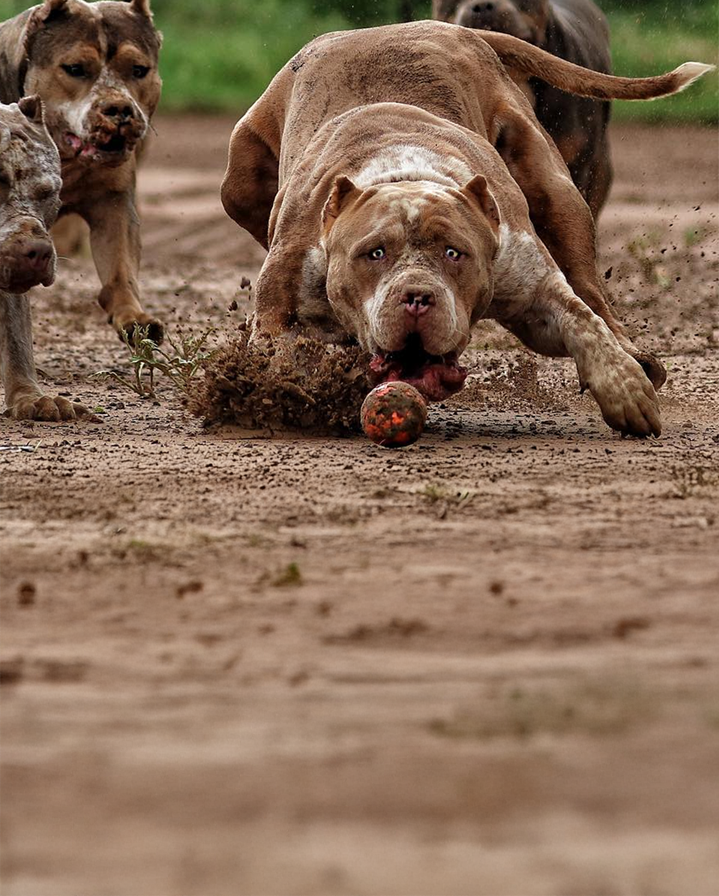
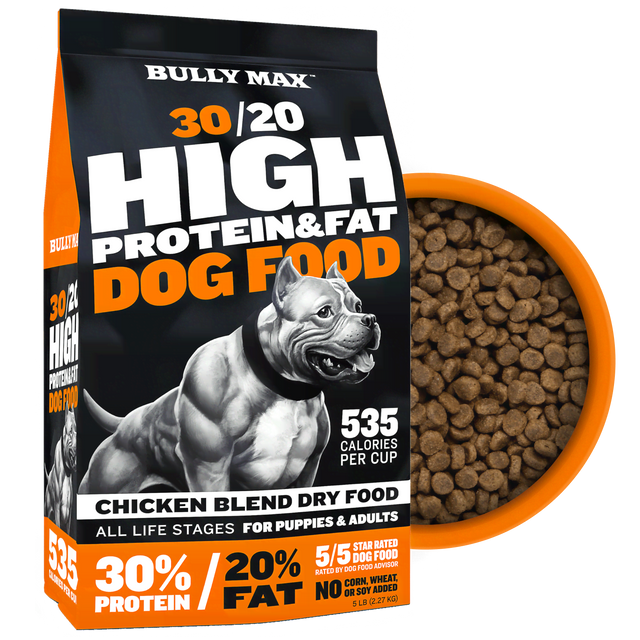
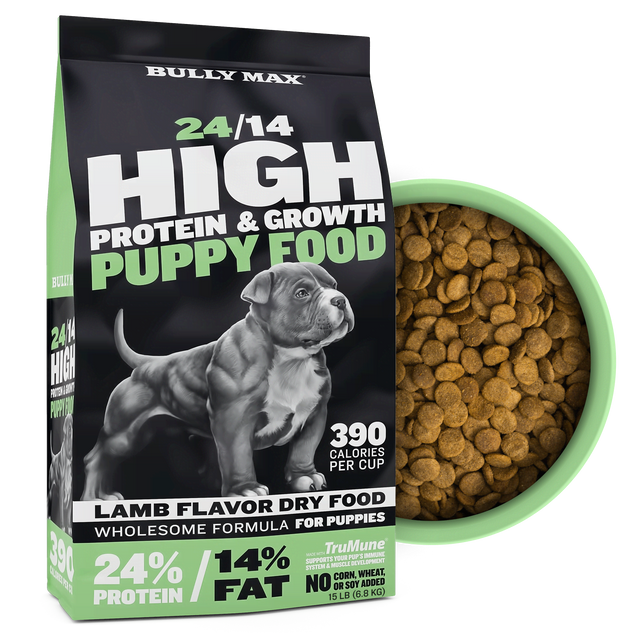
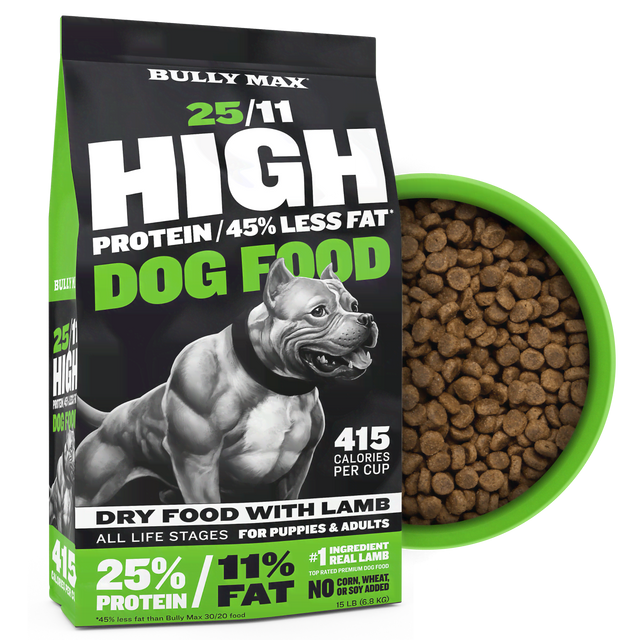
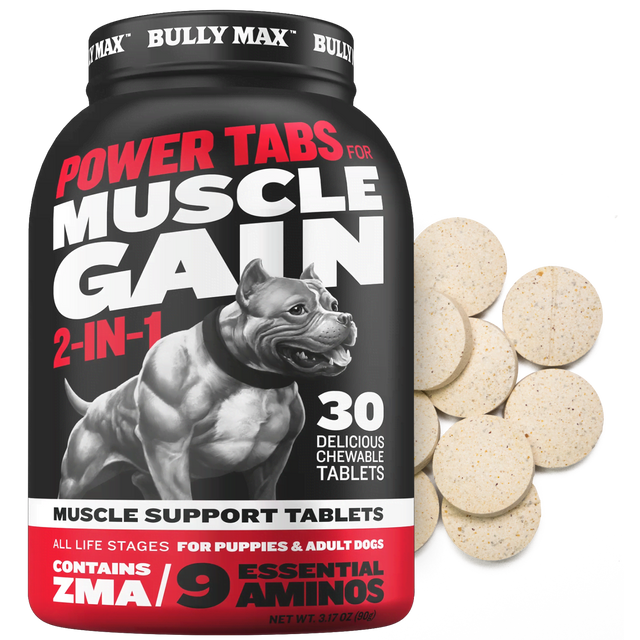




1 comment
What kind of food do I feed my 17-year-old little terrier to gain muscles